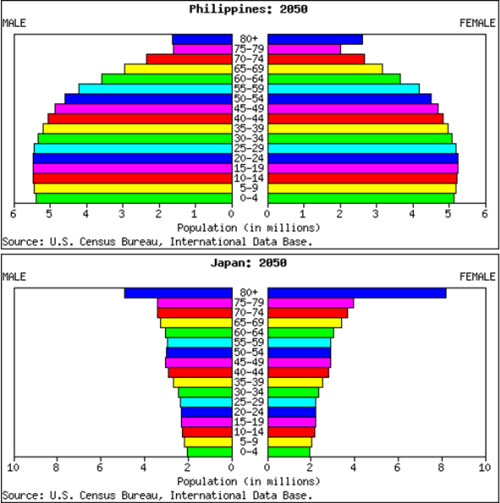Demographics will shape Asia’s future
Last week I gave the keynote at the Board Strategy Planning offsite of a major Philippino bank at a beautiful location a few hours outside Manila.
The bank’s board and executive team recognize the need to respond to the challenges and opportunities of the future, so themed their strategy offsite around the future, inviting me to presenting on Creating the Future of Business to kick off the session.
My presentation delved into the essence of technological, societal, and economic structural change today, and the leadership required to succeed in the emerging world.
One of the topics I touched on was demographic change. Demographics in the Philippines is a very different issue than it is in most developed countries, where rapidly ageing populations are at the forefront.
The following chart shows the anticipated demographic profiles of Philippines and Japan in 2050.

Source: Nationmaster
Japan’s emerging demographic profile is one of the worst in the world, similar to that of Southern European nations such as Spain, Italy and Greece. Japan’s population is anticipated to drop from 130 million at its peak to around 100 million by 2050.
In contrast, the Philippines’ population, currently a little less than 100 million, is expected to rise to over 150 million in the same period.
At the turn of the century China’s population was some 400 million greater than that of India, yet India’s population is expected to exceed that of China by 2030. This will underlie a massive shift in the relative roles of the rising Asian superpowers in the decades to come.
Yet the Philippines is even younger than India. After substantially lagging the economies of its South Asian neighbors through the 90s, the Philippines has picked up more recently, now becoming one of the fastest growing countries in the region, the last two years posting the highest growth rates since the 1950s, including 7.2% in 2013.
Undoubtedly issues including infrastructure, corruption, and a massive wealth divide are holding the country back.
However the power of demographics is on the side of Philippines and other countries in the region such as Indonesia. These forces will be an important part of shaping Asia’s future.
